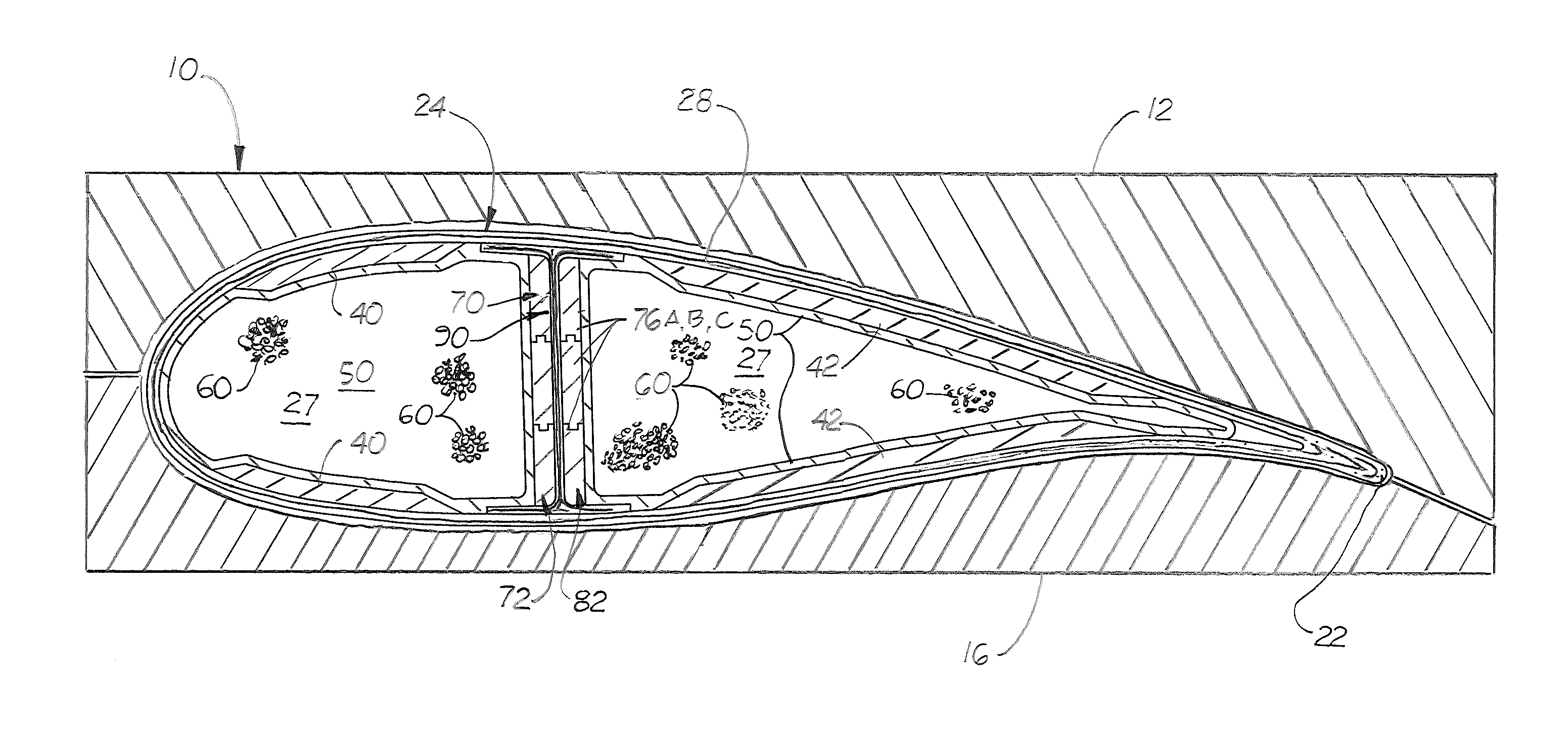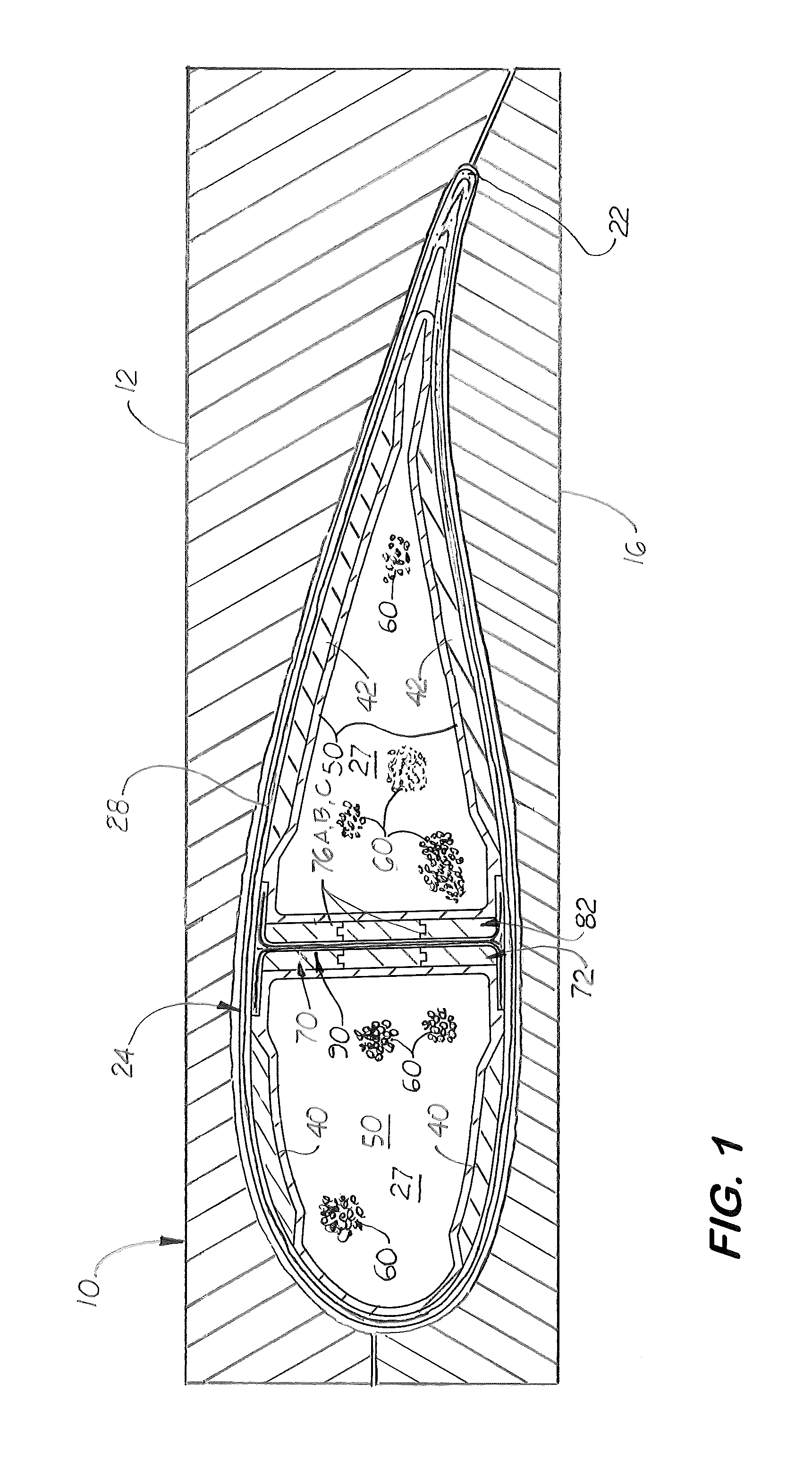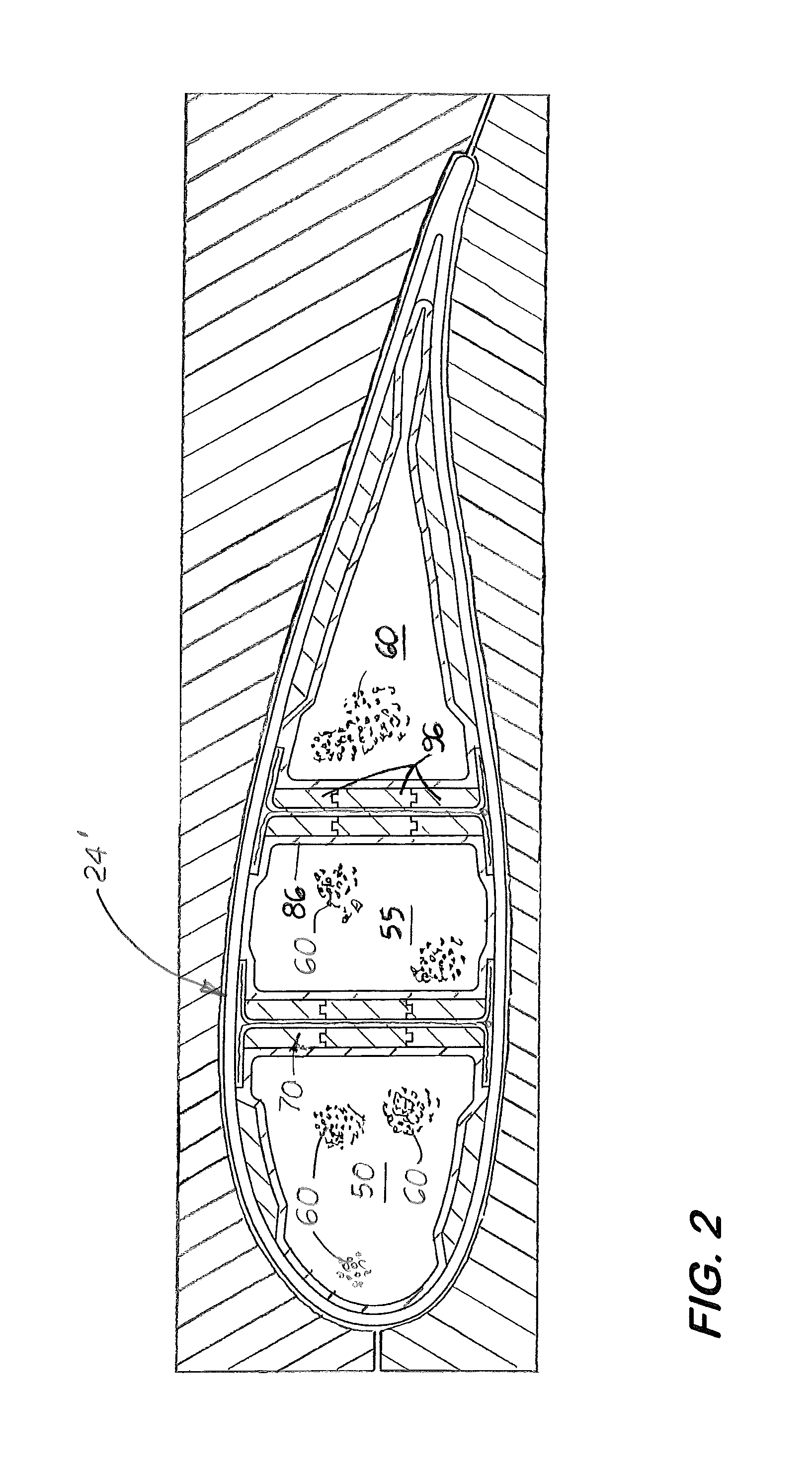Method of manufacturing hollow composite parts with in situ formed internal structures
a composite and in situ technology, applied in the field of composite manufacturing complex structures, can solve the problems of parts not being usable, parts not being infused completely or uniformly into the inner cavity or the shear cavity, and parts not being infused completely or uniformly, and achieve the effect of convenient disassembly
- Summary
- Abstract
- Description
- Claims
- Application Information
AI Technical Summary
Benefits of technology
Problems solved by technology
Method used
Image
Examples
Embodiment Construction
)
[0026]Disclosed here in a method for manufacturing a complex shape in situ, hollow core composite blade or boat mast part 24 with at least one internal structure, called a shear spar 30 formed in situ the part's inner cavity 27 and simultaneously with the part's outer side walls 28. As shown in FIGS. 3 and 4, the part 24, 24′ is shown for illustration to be a wind turbine blade. It should be understood that the method disclosed may be used to manufacture other complex, hollow structures, such as a mast, a pole, and an aircraft wing or stabilizer made of composite material.
[0027]The method disclosed uses the elastomeric bladder, called an envelope 50 that is taught in U.S. patent application Ser. No. 12 / 296,689, filed on Jun. 3, 2009, and now incorporated by reference herein. The envelope 50 is made from an elastomeric material and filled with a plurality of non-inactivity, free flowing spherical objects 60 of different or identical diameters. The envelope 50, the shape of which is ...
PUM
| Property | Measurement | Unit |
|---|---|---|
| structure | aaaaa | aaaaa |
| force | aaaaa | aaaaa |
| structures | aaaaa | aaaaa |
Abstract
Description
Claims
Application Information
 Login to View More
Login to View More - R&D
- Intellectual Property
- Life Sciences
- Materials
- Tech Scout
- Unparalleled Data Quality
- Higher Quality Content
- 60% Fewer Hallucinations
Browse by: Latest US Patents, China's latest patents, Technical Efficacy Thesaurus, Application Domain, Technology Topic, Popular Technical Reports.
© 2025 PatSnap. All rights reserved.Legal|Privacy policy|Modern Slavery Act Transparency Statement|Sitemap|About US| Contact US: help@patsnap.com



